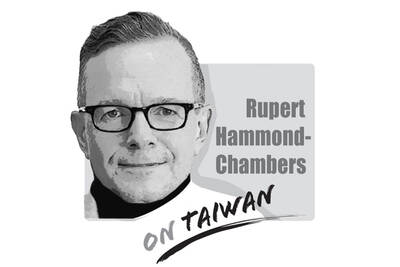Minister of Health and Welfare Chiu Tai-yuan (邱泰源) on Saturday last week outlined four strategies to address Taiwan’s declining birthrate: reducing the burden of childcare; improving maternal and child health; funding more childcare facilities and public housing for new parents; and encouraging marriage and childbearing. Chiu also floated the idea of promoting matchmaking activities — a proposal that drew swift public criticism.
Separately, Deputy Minister of Health and Welfare Lin Ching-yi (林靜儀) on Wednesday told lawmakers that fostering flexible workplace environments and encouraging men to participate in childcare would help boost the birthrate.
The backlash against Chiu is understandable. The problem is not that people cannot find partners, but that economic pressure and shifting social norms are driving the marriage rate down. For many women, professional success is a more appealing prospect than the traditional role of homemaker.
Careers and children are not mutually exclusive, but raising children inevitably requires time away from work. As Lin said, childcare still falls disproportionately on mothers. Financial costs add another layer of difficulty. The factors that matter most to would-be parents — as Chiu and Lin acknowledged — are housing, daycare and flexible workplaces.
Without affordable housing, young people are unlikely to marry and even less likely to have children. Taiwan’s social housing is already insufficient and prioritizes low-income households, making it difficult for young couples to qualify. Significantly expanding housing for families would require overcoming land shortages, regulatory hurdles, competing government priorities and community resistance. Past administrations have pledged reforms — taxing idle properties, incentivizing landlords — yet housing remains scarce and expensive, especially in major cities.
Even for those who secure housing and have children, finding affordable and accessible daycare is another challenge. The government last year expanded public and quasi-public daycare, but because they operate on a lottery system, many families still cannot get a spot. Private daycare is far costlier and also limited in availability. Compounding the problems is that many couples live far from extended family, having relocated to urban centers for work. With both parents typically employed to meet the high cost of living, access to reliable daycare is essential.
Assuming a family does secure daycare, flexibility at work remains crucial. Children get sick and schools suspend classes, while vaccinations, checkups and school events all demand parents’ time. Without employers who understand, routine interruptions become major obstacles.
The government could encourage flexible workplaces by offering subsidies or tax breaks to companies that allow remote work for parents, create backup staffing systems to cover sudden absences, or provide partially paid leave for either parent to care for their children until affordable daycare is found or the child starts school. Overtime must be strictly voluntary for parents, with an anonymous reporting mechanism — or even surprise audits — to ensure compliance.
The notion that Taiwan’s low birthrate stems from people struggling to meet partners misses the point. It is overwhelmingly a practical issue, driven by housing costs, daycare shortages and rigid workplace norms. Matchmaking events might grab headlines, but they do little to address the real barriers to starting a family.
If the government truly wants to reverse the declining birthrate, its most urgent task is to resolve Taiwan’s housing crisis. Without affordable homes, no amount of policy tinkering — or matchmaking drives — will persuade young couples to take on the financial and personal responsibilities of raising children.

In the past month, two important developments are poised to equip Taiwan with expanded capabilities to play foreign policy offense in an age where Taiwan’s diplomatic space is seriously constricted by a hegemonic Beijing. Taiwan Foreign Minister Lin Chia-lung (林佳龍) led a delegation of Taiwan and US companies to the Philippines to promote trilateral economic cooperation between the three countries. Additionally, in the past two weeks, Taiwan has placed chip export controls on South Africa in an escalating standoff over the placing of its diplomatic mission in Pretoria, causing the South Africans to pause and ask for consultations to resolve
An altercation involving a 73-year-old woman and a younger person broke out on a Taipei MRT train last week, with videos of the incident going viral online, sparking wide discussions about the controversial priority seats and social norms. In the video, the elderly woman, surnamed Tseng (曾), approached a passenger in a priority seat and demanded that she get up, and after she refused, she swung her bag, hitting her on the knees and calves several times. In return, the commuter asked a nearby passenger to hold her bag, stood up and kicked Tseng, causing her to fall backward and
In December 1937, Japanese troops captured Nanjing and unleashed one of the darkest chapters of the 20th century. Over six weeks, hundreds of thousands were slaughtered and women were raped on a scale that still defies comprehension. Across Asia, the Japanese occupation left deep scars. Singapore, Malaya, the Philippines and much of China endured terror, forced labor and massacres. My own grandfather was tortured by the Japanese in Singapore. His wife, traumatized beyond recovery, lived the rest of her life in silence and breakdown. These stories are real, not abstract history. Here is the irony: Mao Zedong (毛澤東) himself once told visiting
When I reminded my 83-year-old mother on Wednesday that it was the 76th anniversary of the founding of the People’s Republic of China, she replied: “Yes, it was the day when my family was broken.” That answer captures the paradox of modern China. To most Chinese in mainland China, Oct. 1 is a day of pride — a celebration of national strength, prosperity and global stature. However, on a deeper level, it is also a reminder to many of the families shattered, the freedoms extinguished and the lives sacrificed on the road here. Seventy-six years ago, Chinese Communist leader Mao Zedong (毛澤東)